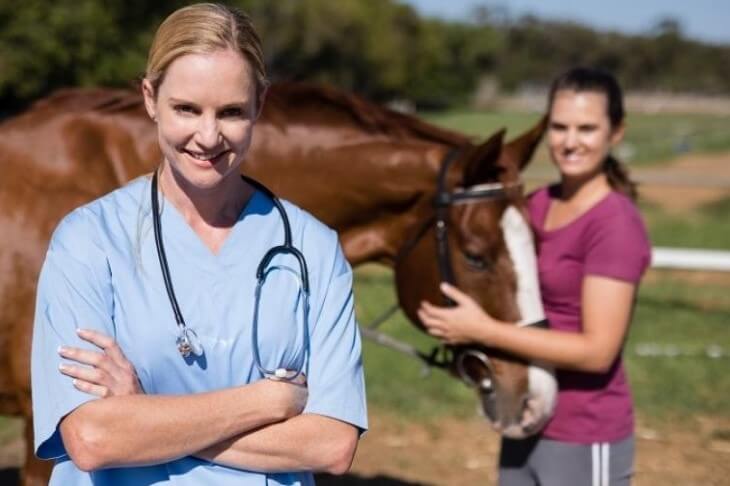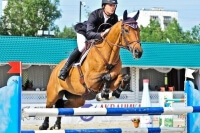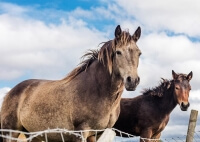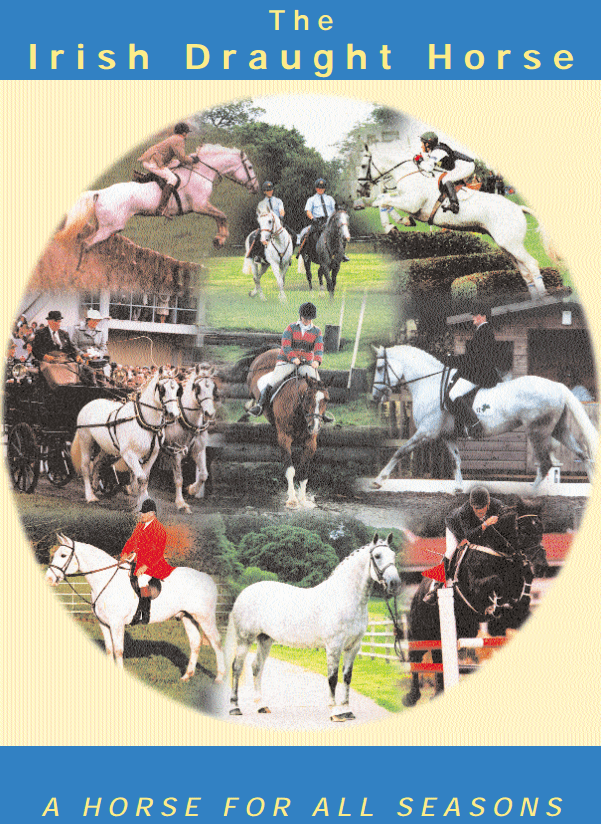A Guide to Buying an Irish Draught Horse – Veterinary Inspection

Performing a veterinary examination is one of the main aspects of buying an Irish Horse, as it is as important as determining the authenticity of the breed. You can easily verify the legitimacy of a horse by checking the Studbook, the passport (or the microchip) its associated registry entry, or by checking whether the parents have been registered in the Studbook. Alternatively, breeders may offer unregistered versions of the Irish Draught to buyers at a discounted price, which can be a great purchase if you are looking to own an Irish steed at an excellent bargain.
Regardless, it is imperative for all horse buyers to subject a steed through a proper veterinary evaluation before making a purchase, as it helps in eliminating the risk of diseases and imperfections. Buyers risk is far more significant in the Irish Horse breed, especially in international markets, where the breed is known to be used extensively as a foundation horse for creating Sport variants. Therefore, horses that are unsuitable for breeding purposes or equine events, especially those with genetic/hereditary defects, diseases, or any other imperfections, may be sold off to unsuspecting buyers at unbelievable prices. A proper veterinary examination can indeed help in avoiding such unpleasant scenarios and help you make a sound investment decision.
Inspection for Equine Competitions & Breeding
All horses are subjected to a pre-inspection veterinary evaluation before gaining entry into the Studbook. These inspections are also a compulsory requirement for any equestrian event, as it is crucial for the horse to be fully fit as per the stipulated guidelines. The entire inspection process lasts for 2-3 days, and the veterinary examination is the very first hurdle that every horse must clear to be able to move on to the rest of the evaluation process.

Having a registered horse is not a must for equestrian events, as you may be able to enter an unregistered horse into any competition by purchasing a healthy specimen that is capable of passing all the basic veterinary examination criteria. Evaluation through a certified vet can ensure that the quality levels of your equine matches or exceeds the requirements set by the official standards. Conducting a private assessment will also help you in better preparing your steed for the official inspection, as you will have a better idea about your steed’s overall health status.
If you are a breeder, then veterinary inspection must be at the top of your priorities list while buying the Irish Draught. Purebred stallions and mares of the breed are highly endangered, especially with the risk of a lack of genetic diversity and imperfections. Therefore, The Irish Draught Horse Society outlines pretty stringent conditions for horse breeders, where only the very best specimens receive the best grades in the evaluation process.
The Veterinary Inspection Process
The Irish Draught Horse Society has a clear-cut protocol for grading horses according to their genetic characteristics and health levels. Horses are subjected through an extensive testing process, whereby every physical attribute of the equine will be cross-referenced with the standard requirements. Several physical characteristics such as the height, the length of bone, and the girth, the colour, the head, the structure, the eyes, the tail, and even the sensitivity to stimulation are evaluated to assign a grade from 1 to 5. The entire Veterinary examination process is divided into five different stages, but the stages may be expanded or contracted according to individual event requirements.
Stage 1: Preliminary Examination
Preliminary examination of the horse is the first step of the process, where the vet observes the visual aspects of the equine, such as its colour, dimensions, and all the other physical attributes. The evaluation also assesses the rhythm and sound of the heart and lungs at rest, in order to better understand the stress levels of the horse under different test conditions.

Stage 2: Gait Assessment & Trotting Up
The movement of the horse is examined in this stage through a co-ordination test, where the steeds are trotted on a loose rein, made to move around in a tight circle and perform a reverse manoeuvre. The coordination of the horse is carefully analysed on several parameters, and the grades are assigned accordingly. Stages 1 and 2 will be evaluated under saddle and free athleticism assessment.

Stage 3: Strenuous Exercise
The most challenging phase of evaluation is the performance of the horse under a severe load, where the vet evaluates the performance of the heart and the lungs while lunging on a lead at working canter. The heart and lungs auscultation is carefully documented and correlated with the results observed at rest.

Stage 4: Rest Period
Horses are given a rest after the heavy workout, where the vet will evaluate the horse’s recovery process and its ability to manage stress. Pupillary dilation, heart rate, lungs performance, and the emotional state are assessed to understand whether the equine is capable of handling the stress under acceptable levels.

Stage 5: Second Trot & Foot Examination
After the rest period, the horse is once again taken for a trot, after which, its foot is examined. The primary aim of this stage is to recognise the soundness of the horse to resume activity after the initial workout, and how it was able to manage its recovery process. The foot is examined to understand the load on each hoof, and whether the exercise has had an adverse impact on the steed.
Stage 1 >>Precautions for a Successful Veterinary Examination
Horses will be evaluated only upon attaining the age of three, and it is the responsibility of the trainer or the handler to present the horse in show condition. Grooming is an important consideration during the process of evaluation of a horse, as a horse must be maintained in good condition at all times to receive the highest grade. Even the manes must be braided, plaited, or at least pulled neat to be made presentable at all times.
Handlers will have access to the pen for training/acclimatising their horses with the course for a limited period, which must be used to familiarise your horse with the surroundings. Handlers, trainers, and riders must be in the prescribed dress code during the entire testing process, and the maintenance of the horses during the whole duration is the owner’s sole responsibility.
Unlike in the past, where the evaluation process will result in a pass/fail, modern test standards have been tweaked to offer a grade to all the horses that are evaluated through the official process. Therefore, your primary aim must be to own a horse that has a higher grade, preferably one that can be bred and can take part in equestrian competitions with no restrictions.




